Fact-Checking Europa: The Last Battle | Part One (Full)
Judeo-Bolshevism, Communism, the Rothschilds and Central Banking
In recent years Europa: The Last Battle has become a surprise underground sensation. The 2017 film is made by Tobias Bratt, a Swedish activist. It’s ever-increasing popularity is due entirely to word of mouth and shares on social media, as censorship has banished it to the far-corners of the internet. It’s popularity is an interesting phenomenon, as it promotes pretty radical views on things like Jewish influence, historical revisionism and National Socialism. A lot of people cite it as their major red pill, but I’ve seen some dismiss it as “meme history” and a propaganda piece.
Since it’s so popular, I’ve decided it might be worth giving it a serious treatment and fact-checking its claims as I watch it. I think most people that like the documentary probably don’t care much about the veracity of the individual claims, but it could still be an interesting way to look at some of the history covered in the documentary. Additionally, as someone who has been in dissident right circles for years now, I must admit to noticing a real decline in the intellectual quality of what’s being presented regarding the topic of Jewish influence (which is inevitable as it reaches a wider audience), as well as the spread of what I consider historically indefensible apologetics for National Socialism. So as much as this documentary isn’t a serious intellectual piece, I suppose I do feel some obligation to engage with something like this and try and offer a correction to some of these tendencies, even if it might fall on deaf ears
The full film is over 12 hours long, so I probably won’t cover the whole thing. This section alone consists of over 1,500 words, and that’s only on the first ten minutes. There are 6 ten minute segments in an hour, and 12 hours in the documentary, which would mean I would write 72 of these, or over 100,000 words, if I continued at this pace. I have included timestamps to make it easy to follow along while watching the documentary, which is available in full here.
So without further ado, fact-checking Europa: The Last Battle.
Moses Hess called Christianity “the religion of death” (03:40)
This is a real quote from page 76 of Hess’ Rome and Jerusalem. But when writing this, Hess was not taking an adversarial position against Europeans, but predicting the decline of Christianity would awaken more virile European nationalisms. For example, on the same page Hess writes that “On the ruins of Christian Rome there rises a regenerated Italian people.”1 Hess also wrote favourably of Christianity as a stage in human development in his early philosophical writings.2
Moses Hess predicted a race war in Europe involving Germany and Italy (03:45)
Hess had a heterodox view as a communist in holding an ethnocentric view of human history that saw racial conflict as a driver of history more than class struggle. He predicted Italy would unify, triggering German unification, and that the growth of nationalism would lead to conflict.
However, the point of this quote in the documentary seems to be to suggest he predicted a great racial conflict between the Germans and Italians against Jews, which obviously proved to be WW2. Although he did expect the rise in nationalism would increase antisemitism he didn’t make this kind of grand prediction. And he advocated a kind of European cultural unity that he predicted would come with the decline of the church:
Europe does not need to have imposed upon it one law, one form of government, one belief or any other one external coercive measure before it would feel unified and strong. Europe is already unified through its history and its culture. . . . The European nations are so near to each other in an essential way, that all one needs is the disintegration of these shallow powers which still exist on the surface— the external state and church— in order to bring about the emergence of the internal unity of the peoples of Europe. [Even] a general European war would lead to a general European alliance.3
Hess wasn’t hoping a European war would destroy Europeans, but that it would unify them.
Hess converted Marx and Engels to Communism and assisted them with the Communist Manifesto — This proves that socialism, communism, Marxism and Zionism have the same roots (4:00)
Hess first met Marx in 1842 and spoke fondly of him; he collaborated with him on writing The German Ideology in 1845; and he introduced Engels to communism. Hess was indeed involved with the original writing of the Communist Manifesto. However, in the final version of the manifesto Marx disparages the “utopian socialism” of Hess.
Marx likely would have been a communist without Hess. His intellectual origin was in the milieu of the young Hegelians, and he and Hess first came into contact while Marx was submitting articles for Rheinische Zeitung, which Hess edited. Marx was influenced early on by French socialist ideas, before developing his dialectical materialism through his materialist inversion of Hegel. Certainly, Marx didn’t adopt the ideas of the centrality of race and nation that Hess did, instead believing the rise in European nationalism was a transient, bourgeois creation. After 1848 they drifted further in their politics. Despite their relationship, Hess doesn’t belong alongside names like Hegel and Feuerbach as a major influence on Marx’s thought.
Karl Marx’s real name was Moses Mordechai Levy and he was descended from a long line of Rabbis (4:30)
Karl Marx’s real name was Karl Marx. His birth certificate spells it as “Carl”, which was the common spelling at the time, but in his adult life he always signed his name as Karl. Moses Mordechai Levy was the name of Marx’s grandfather. So yes, he was born to a long line of Talmudic scholars on his father’s side. Karl’s father Heinrich converted to Christianity around 1816, but likely as a way to circumvent Prussian laws that affected Jews.
Marx was related to the Rothschilds, who funded Marx (4:30)
Marx was a third or fourth cousin of Nathan Mayer, Lord Rothschild.4
However, there is no evidence the Rothschilds ever provided funding to Marx. Marx, for his part, “vilified the Rothschilds as a quintessence of capitalist evil.”5
“Jewry is the mother of Marxism” — quote from Le Droit De Vivre on May 12, 1936 (5:00)
There is no May 12 edition of the magazine. It had weekly editions on May 9 and 16, but neither contain this quote or anything like it.
The Communist Manifesto is arguing for Jewish control of media and banking (5:40)
The Communist Manifesto doesn’t mention control of the media at all. It’s obviously the interpretation of the maker of the documentary that centralised control of the financial system was to empower monopoly bankers, but that certainly isn’t in the manifesto, and Marx’s theory predicted the final stage of communism as a stateless, moneyless society. So a centralised state-backed banking cartel definitely isn’t part of the vision.
The Communist Manifesto argued women should not focus on family or children anymore (5:47)
To support this, the documentary quotes “Communism aims to do away with the status of women as mere instruments of production.” The placement suggests that the quote is talking about ending women as instruments of production of babies, but that’s not what’s being argued. Rather, they are arguing against the indignity of women being turned into instruments of capitalist production.
Marx encouraged genocide of Slavs and called them “racial trash” (6:25)
Marx is quoted as saying “The classes and the races too weak to master the new conditions of life must give way. They must perish in the revolutionary Holocaust”. The citation is wrong, and this is actually a mashup of two quotes. One is from an 1853 article by Marx: “The classes and the races, too weak to master the new conditions of life, must give way.” The other is from an Engels letter from 1849 where he writes that aside from a few European groups like Germans, Poles and Magyars “All the other large and small nationalities and peoples are destined to perish before long in the revolutionary world storm.”
Marx and Engels did hold racist views of slavs (as was common in Germany at the time) and did predict the dissolution of their “petty nationalisms”, which they viewed as counter-revolutionary, as well as the elimination of “entire reactionary peoples” by future war. Engels termed these people Völkerabfälle, which has been translated as racial trash as the documentary suggests. It was Engels who described these people as “residual fragments of peoples” who had been swallowed up by more powerful countries in the progressive development of history. South Slavs were used as one example, but also “in France, are the Bretons, the supporters of the Bourbons" and “in Scotland, are the Gaels, the supporters of the Stuarts from 1640 to 1745.”6 So this designation wasn’t necessarily biological when used by Engels, rather designating these as people in a more primitive stage of development left behind by the historical process.
The documentary suggests they argued for a targeted genocide of Slavs on racial grounds in a way they never did.
Winston Churchill argued international Jews would use communism in tandem with Zionism to achieve a one world communist government (9:10)
This is such a complete misinterpretation of Churchill’s argument in Zionism versus Bolshevism that it practically turns it on its head. Churchill’s argument was that Bolshevism was a Jewish movement, but that Zionism was the antidote and positive alternative for the Jewish people. In the essay, Churchill calls Jews “the most formidable and the most remarkable race which has ever appeared in the world”, and rather than seeing them as part of it, called on Zionist Jews to help thwart the global Bolshevik conspiracy.
In 1829, the Rothschilds “purchased Jerusalem” (9:30)
The source for this quote is indeed accurate, coming from the Niles Weekly Register in 1829
There is a report that the Rothschilds have purchased Jerusalem! We see nothing improbable that the Rothschilds should purchase the ancient capital of their nation . . . They [the Rothschilds] might instantly, as it were, gather a large nation together, soon capable of defending itself, and having a wonderful influence over the commerce and condition of the east, rendering Judea again the place of deposit of a large portion of the wealth of the ancient city.7
But this report, which the Register never sources, was obviously false. Jerusalem was under Ottoman control and remained so until after WW1, almost a century later. The Ottomans selling an entire city to a British-based banking family (however that would work) would have been pretty significant and probably reported elsewhere.
“It is believed that he (Rothschild) is the richest man in the world” (9:50)
Not sure who the man speaking here is, but although this is a common trope of conspiracy theory content, there is no evidence any Rothschild is close to being the richest person in the world.
“The wealthy Jews rule the world. In their hands lies the fate of governments and nations. They start wars between countries and, when they wish, governments make peace. When the wealthy Jews sing, the nations and their leaders dance along and meanwhile the Jews get richer.” — Theodore Herzl (10:40)
This is a real quote.8
Researchers estimate the wealth of the Rothschild family at $500 trillion, more than the wealth of the entire world (14:03)
Who are the researchers? This is an incredible claim, but it’s baseless.
The Rothschilds bought Reuters in the 1800s (14:23)
Wrong. The Rothschild bank in London was an early patron of Paul Julius Reuter, the son of a Rabbi who founded Reuters.9 Paul owned the business until his death in 1899, after which it passed to his son. Today, the majority of Reuters’ stock is owned by the Woodbridge Company, a Canadian investment firm.10
Reuters then bought the Associated Press. (14:29)
Wrong. Reuters never bought out Associated Press. They remain separate entities.
They [The Rothschilds] have controlling interests in three major television networks (14:39)
What networks? We aren’t told, and as this is said an image appears on the screen showing logos of Associated Press and Reuters, which aren’t television networks. I can’t identify any major television networks owned by the Rothschilds.
This is a reader-supported publication. To receive new posts and support my work, consider becoming a free or paid subscriber.
Until recently the Rothschild family controlled England’s Royal Mint and continue to be the gold agent for the Bank of England (14:46)
It is true that Britain leased out administration of its minting refinery to Anthony de Rothschild, in 1852. This was a time of great colonial expansion for Britain, and:
Operating the refinery immediately put much of the new Australian and California gold production at the disposal of the merchant bank, later securing them a good share of early South African gold.11
Through this expansion, by the 20th Century more than half the world’s commercial gold was being treated by the Rothschild firm:
Rothschild, through its connection to the refinery, gained access to and
control over Empire gold, which in 1914 accounted for 70 per cent. of world output; the majority of which was shipped to London and treated at the Rothschild refinery.12
In 1968, the Rothschild group sold the Royal Mint Refinery to Engelhard Industries.13
A report by the Bank of England in 1967 listed the Rothschild bank as one of five members of the London gold market — five banking firms allowed to “fix” the price of gold in a position created in 1919 — and reported the Rothschild bank was one of two tasked with processing and refining gold:
Two of the members (Johnson Matthey and Rothschilds) melt. refine, assay and process gold. Rothschilds act as chairman of the market and have done so since the market was constituted in its present form after the First World War. and the daily gold price fixing takes place on their premises.14
So Rothschild bank had a more central role than any entity in managing Britain’s gold market. However, the Rothschilds are not currently serving as the “gold agent” of the bank, as Europa claims. In 2004, N.M. Rothschild & Sons withdrew from the gold market, including trading of gold and its role in “fixing” the price of gold with other London banks.15
The Rothschilds controls the Bank of England (14:52)
No evidence for this.
The Rothschilds control the London Bullion Market Association allowing them to fix the world’s gold price and earn millions in transaction fees (14:55)
As mentioned above, the Rothschilds were one of five firms in charge of the London Gold Market, which was tasked with fixing gold prices and overseeing the operation of the gold market in London. The London Bullion Market Association (LBMA) was established in 1987 when the Bank of England decided an independent body was needed to handle this role.
The organisation gets its members from a number of banks, brokers and other firms involved in the precious metals market. You can find its board members here. No Rothschilds are involved, and there’s no evidence they have control of the body by any other means.
Over the centuries the Rothschilds have acquired trillions worth of gold and cornered the world’s gold supply (15:18)
If there’s any evidence for this, the documentary isn’t presenting it. In 2023, A Sunday Times wealth report estimated the Rothschild family fortune to be worth a modest billion dollars. It’s quite possible that it’s substantially more than that and the public is unaware of its true extent, but this this never seems to be substantiated by conspiracy theorists on this topic.
The Rothschilds own the world’s largest oil company, Royal Dutch Shell (15:27)
Not true. In 1912, Royal Dutch Shell bought out a Rothschild-owned oil company named Bnito, which operated in the Russian Empire. As part of the deal, the Rothschilds became shareholders in Royal Dutch Shell.16 They never had a controlling share, and in 2022 Rothschild Investment Corp closed their position in Shell PLC, at which point they no longer held any shares in the company. 17
Through Central Banks, the Rothschild family control the money supply of almost every nation on earth (16:23)
Wrong. Most central banks are controlled by governments and run through boards and committees. Most are entirely state-owned, and have quite a bit of transparency in their governance structure. In a couple of minutes we’ve heard the Rothschilds control most of the world’s wealth, most of its gold, major television networks, the world’s biggest oil company and most central banks, all without a shred of evidence.
In 1910, Seven of the world’s richest Jewish men held a secret meeting to establish the Federal Reserve (16:29)
The documentary only names five of these seven. These men — A. Piatt Andrew, Benjamin Strong, Nelson Aldrich, Henry Davison, Arthur Shelton, Frank Vanderlip and Paul Warburg — did meet at Jekyll Island to devise a plan to reform the country’s banking system. But the claim they were all Jewish is false. Of these seven, only one, Paul Warburg, was Jewish.
The three most powerful men who opposed the Federal Reserve all died aboard the Titanic (17:00)
Benjamin Guggeneim, Isador Straus and John Jacob Astor are listed as three of the richest men in the world, whose deaths aboard the Titanic ended serious opposition to the creation of the Federal Reserve. It is true they all died on the Titanic, and all were very wealthy, with Astor being one of the richest men in the world at the time of his death.
But there is no evidence any of the three were opposed to central banking or a Federal Reserve. In fact, a 1911 New York Times edition reported that Astor was a big supporter of the idea.18
But it gets better: Isidor Straus not only wrote in favour of establishing a central bank,19 he actually served as treasurer of the New York branch of the National Citizens' League for the Promotion of a Sound Banking System, which existed to petition for the establishment of the Federal Reserve. Now guess who had a role in establishing this organisation? None other than Paul Warburg!20 If anything, a conspiracy centered around the Titanic sinking would make more sense if the filmmakers said it was targeting supporters of the Federal Reserve.
With many Congressmen and Senators home for Christmas, Woodrow Wilson signed the Federal Reserve into existence (17:29)
The act had been debated for months before it came to a vote, it didn’t catch anyone by surprise while they were home for Christmas. The US House of Representatives approved the bill 298-60, and the Senate approved it 43-25.21 Nothing would have changed with greater attendance or more debate.
The Federal Reserve gave control of the nation’s money supplies to private interests (17:38)
The structure of the US Federal Reserve is enormously complicated and makes good material for conspiracy theories. The Fed doesn’t fall under the executive branch but is supposed to be an independent agency with oversight from Congress. This is intended to give it some independence from day-to-day political pressures and oversight.
The Federal Reserve System is considered to be an independent central bank. It is so, however, only in the sense that its decisions do not have to be ratified by the President or anyone else in the executive branch of the government. The entire System is subject to oversight by the U.S. Congress….the Federal Reserve must work within the framework of the overall objectives of economic and financial policy established by the government.22
The Fed is structured like a corporation, and twelve Federal Reserve Banks are “owned” by private member banks in their districts, but this “ownership” doesn’t give them the kind of control ownership confers in any other corporate context. These Reserve Banks don’t operate for profit, and commercial banks own stock in them to satisfy a condition of membership in the system. The earnings of these Reserve Banks are required by law to be transferred back to the US Treasury. The Board of Governors is still appointed by the President and confirmed by the Senate.
Woodrow Wilson wrote in 1913 that he regretted handing control of the country to a banking cartel (17:55)
Europa says that Wilson wrote these words in 1913:
I am a most unhappy man. I have unwittingly ruined my country. A great industrial nation is controlled by its system of credit. Our system of credit is concentrated. The growth of the nation, therefore, and all our activities are in the hands of a few men. We have come to be one of the worst ruled, one of the most completely controlled and dominated Governments in the civilized world no longer a Government by free opinion, no longer a Government by conviction and the vote of the majority, but a Government by the opinion and duress of a small group of dominant men.
Wilson never said this. This website breaks down the background to this quote. Basically, part of it is made up, and the rest is mined from two different paragraphs of a book Wilson wrote BEFORE establishing the Federal Reserve. So Wilson’s support for the Federal Reserve was actually motivated by this kind of sentiment about limiting the monopoly power of private bankers, it certainly wasn’t an expression of regret. I can’t find any speeches or writings after the act where Wilson expresses any regret over the creation of the Federal Reserve.
Jewish bankers and their Rabbis celebrated the passing of the Federal Reserve Act in 1913 (18:34)
It’s not clear what he’s referring to and I can’t find anything on this topic. It looks like someone attached this caption to an old photo of a Rabbi standing with businessmen and the film ran with it.
“The financial system has been turned over to the Federal Reserve Board. That board administers the finance system by authority of a purely profiteering group. The system is private, conducted for the sole purpose of obtaining the greatest possible profits from the use of other people's money.” — Charles Lindbergh (18:45)
This is a real quote. It’s usually posted without a source, but I tracked it down to Chapter XIII of a book Lindbergh wrote called The Economic Pinch.23
“The adoption of the debt-based financial system preached by Marx in the Communist Manifesto had been accomplished” (19:08)
Marx saw capitalist credit creation as exploitative and never advocated anything close to a “debt-based financial system”. Marx envisioned communist society as being classless and moneyless. With the means of production collectively owned, there would be no more profit-seeking or usury.
The elite that own the Federal Reserve control other banks, corporations, and the world’s money supply. It creates worthless money out of thin air, backed by nothing. (19:42)
As is common in this kind of conspiracy content, the filmmakers are really overestimating the role of the Fed in control of the world’s money supply.
This is a painfully complex topic, but I did my best to explain how the global financial system and its money supply really works in my article on the Eurodollar system, so to conclude, I’m going to suggest you go read that for some real red pills:
The Shadow Money System That Rules The World
In any alternative media space, you are sure to find much talk about US dollar dominance, as well as optimistic forecasts of its imminent decline. This is also true in the radical right, where nationalists pine after an end to US imperial hegemony and the rise of a more multipolar world.
One important takeaway for this though, is that while money is created out of thin air, through credit creation, this is not done by the Federal Reserve, but by private banks.
Every Federal Reserve Chairman since 1980 has been Jewish (20:14)
Almost, but no. From 1980 to the time of the film’s release the Fed chairs were:
Paul Volcker (1979-1987): Not Jewish.
Alan Greenspan (1987-2006): Jewish.
Ben Bernanke (2006-2014): Jewish.
Janet Yellen (2014-2018): Jewish.
Three out of four is obviously an enormous overrepresentation for a group that is 2-3% of the American population, but Europa still turns this into something that can easily be debunked by naming Volcker as a Jew.
The House of Rothschild owns 57% of the stock of the Federal Reserve (20:22)
Not true, and as I explained in Part 2, the Fed isn’t privately owned like a normal corporation anyway. The Fed’s “stock” is divided among member banks without the rights of traditional company stock ownership.
My work is entirely subscriber-supported. Please consider supporting my work by becoming a paid subscriber, or join my mailing list for free.
Quote from a Jew explaining that they control the country through the Federal Reserve (20:58)
Europa includes a lengthy quotation from a Jew named Harold Wallace Rosenthal which includes the following:
“Our power has been created through the manipulation of the national monetary system. We authored the quotation. ‘Money is power.’ As revealed in our master plan, it was essential for us to establish a private national bank. The Federal Reserve system fitted our plan nicely since it is owned by us, but the name implies that it is a government institution. From the very outset, our purpose was to confiscate all the gold and silver, replacing them with worthless non-redeemable paper notes. This we have done!”
Rosenthal was an aide to a Senator killed in a terrorist attack in Turkey in 1976. The purported interview that contained this quote was released in 1978 in a pamphlet titled The Hidden Tyranny by a man named Walter White Jr.
We have no evidence this interview actually happened other than the word of White, and Rosenthal could not dispute it since it was published almost two years after his death. White nationalist Tom Metzger, who knew White, said the interview was bogus and considered White a liar. He said on his radio show regarding the interview:
That interview never took place. Walter White operated free and loose on some subjects, like this one. He disappeared once for a while. I personally sent men searching for him. He showed up claiming the JDL kidnapped him and dumped him at the Mexican border. He was really shacked up with a younger woman in an L.A. motel. … That interview is bogus. There is plenty of valid material to use against the Jews.24
Now it’s time for the Bolshevik Revolution.
State Department documents show a group of powerful Jews planned the overthrow of the Tsar in 1916 (24:09)
Jacob Schiff, Felix Warburg, Otto Kahn, Isaac Seligman, and Mortimer Schiff are listed as part of this conspiracy. Europa doesn’t elaborate further on what these State Department documents were or what they proved, but I’ve been able to track down the source and to my surprise this claim actually has merit.
In the book Wall Street and the Bolshevik Revolution, author Antony Sutton traces this to a State Department Decimal File (861.00/5339) which contained a document titled “Bolshevism and Judaism”, dated November 13, 1918:
The text is in the form of a report, which states that the revolution in Russia was engineered "in February 1916" and "it was found that the following persons and firms were engaged in this destructive work":
(1) Jacob Schiff - Jew
(2) Kuhn, Loeb & Company - Jewish Firm
Management:
Jacob Schiff - Jew
Felix Warburg - Jew
Otto H. Kahn - Jew
Mortimer L. Schiff - Jew
Jerome J. Hanauer - Jew
Guggenheim - Jew
Max Breitung - Jew
Isaac Seligman - Jew
The report goes on to assert that there can be no doubt that the Russian Revolution was started and engineered by this group and that in April 1917.
Sutton informs us that the documents anonymous author was a member of the US War Trade Board. In this context Sutton also quotes a British Intelligence report, which writes:
SUMMARY: There is now definite evidence that Bolshevism is an international movement controlled by Jews; communications are passing between the leaders in America, France, Russia and England with a view to concerted action...25
Sutton notes that “none of the above statements can be supported with hard empirical evidence”,26 since these purported letters have never been seen. He then writes a brief dismissal of a Jewish conspiracy by saying Jewish overrepresentation is meaningless because there’s no reason to think Jews would have supported Bolshevism just because of their Jewishness. Sutton doesn’t explain why that must be the case though, and I don’t find his way of dismissing this very convincing.
These documents are certainly interesting, but what to make of them on their own? It’s also worth noting that some of these names, like Schiff, were supportive of the Republican faction the Bolsheviks were fighting against. So at least from everything else we know about their views and patronage, it would be unlikely they would have supported an overthrow of the Republican government.
Alexander II of Russia was assassinated by a Jewish revolutionary named Vera Figner (25:10)
Vera Figner was not Jewish. She was born to Russian nobility on both sides of her family.27
“The Jew Alexander Kerensky” (25:44)
Kerensky was commonly rumoured to be Jewish, but there is nothing to support this. Nothing in his father’s biography suggests a Jewish identification. Interestingly, his mother’s name was Nadezhda Alexandrovna Adler, and Adler is a common Jewish name. However, Nadezhda was the granddaughter of freed serfs and the daughter of a General Alexander Adler, a nobleman and figurehead in the Kazan Military District.28 So certainly not Jewish.
Kerensky received one million dollars from Jacob Schiff to free all political prisoners and welcome back political exiles (25:45)
A document by a Cyrus Adler which profiles Schiff writes that Schiff:
Was in sympathy with the Kerensky Government, and evinced this by a subscription of one million rubles to the loan issued by that Government which, for the time being, at least, is valueless.29
Ron Chernow also claims Schiff made a loan of this sum in his book The Warburgs.30 Schiff, like many other Jews in America, was indeed intent on helping to overthrow the Tsarist regime they considered antisemitic.
Kerensky did release tens of thousands of prisoners — titled “Jailbirds of Kerensky” — in a series of amnesties in 1917. However, there’s no evidence Schiff demanded these prisoner releases, as Europa suggests.
Jacob Schiff handled contacts between the Jewish B’nai B’rith Masonic organisation and the Russian revolutionaries (26:14)
Schiff was a member of B’nai B’rith, but there isn’t anything to substantiate this.
Jacob Schiff and Max Warburg sent Trotsky to Russia to complete the revolution (26:25)
There’s no evidence that Warburg or Schiff were directing Trotsky to return to Russia. It is worth noting though that Trotsky was granted a passport to return to Russia, with transit through Britain, by none other than Woodrow Wilson. As one biographer writes, "Historians must never forget that Woodrow Wilson, despite the efforts of the British police, made it possible for Leon Trotsky to enter Russia with an American passport."31
Sutton reports that Trotsky lived large during his time in New York, and was reported to have a fortune of $10,000 on him when leaving the country, despite his only profession being a communist revolutionary. The records show that an MI5 agent tasked with monitoring Trotsky dispatched a message to London about the sum saying Trotsky had set sail "with $10,000 subscribed by Socialists and Germans."32
This would have been a remarkable sum that would be worth hundreds of thousands in today’s currency. This has fueled subsequent speculation on if Trotsky was funded by sympathetic wealthy Jews in America. Trotsky biographer Kenneth Ackerman writes that Trotsky ingratiated himself well with the Jewish community during his period living in New York before the revolution:
“Many of these Jews in New York knew Trotsky as someone who had outspokenly denounced the Tsar for his anti-Semitism, so he was very popular.”33
The agent who sent the telegram alleging Trotsky was carrying a fortune ordered that Trotsky be detained after his stop in Halifax, Canada. This was overruled by an MI6 Agent, who concluded the information originated with “an agent provocateur, used by the old Russian Secret Police”. Ackerman believes that:
If Trotsky in fact had been carrying it, he would have had to throw it overboard into the ocean or the deep waters of Bedford Basin to avoid the British finding it, highly unlikely given the hundreds of witnesses on board.34
Overall then, the evidence for Trotsky leaving the US with a massive fortune is a little dubious, but in any case there would nothing to connect it to bankers like Warburg or Schiff.
Schiff and Warburg supplied Trotsky with $20 million in gold, today worth billions (26:38)
Conspiracy websites say it was reported that Schiff’s son John in “The Knickerbocker Column” of the New York Journal American in February 1949. They seem to recirculate this quote:
“Today it is estimated by Jacob's grandson, John Schiff, that the old man sank about $20,000,000 for the final triumph of Bolshevism in Russia."
This doesn’t seem to me credible by itself, as it’s a second-hand account of a statement by Schiff’s grandson, which doesn’t seem to be corroborated with anything else. Moreover, Europa specifically adds that it was gold for some reason, which isn’t included in other versions of this conspiracy. Where did it get that from? Wouldn’t lumbering $20 million worth of gold — billions worth in today’s money — across the world present some practical problems for Trotsky? Wouldn’t it have been recorded in the report documenting the $10,000 fortune he left America with? Or noticed when he arrived in England?

90,000 revolutionaries, mostly Jews and freemasons returned to Russia to join the revolution (26:44)
We don’t know exactly how many entered Russia to partake in revolution, but it’s nothing close to 90,000. So where did Europa get this figure? This is the number historians estimated were the “Jailbirds of Kerensky” released from prison in Russia. A pretty serious error on the filmmakers’ part. Also, it sure is convenient Europa tells us these tens of thousands of Jews not recorded anywhere changed their names to Russian.
Jewish-Swedish banker Olof Aschberg funded the Bolsheviks; his grandson is a former communist and anti-White activist today (26:57)
True.
Jewish chairman of the executive committee Jacob Sverdlov ordered Jewish Cheka commander Jacob Yurovsky to kill the Tsar’s family under orders from Jacob Schiff (27:35)
Much like the Federal Reserve chairmen bit, this is a fairly typical case of Europa having information that’s remarkable in showing the extent of Jewish influence, but adding an outright lie to make it seem even more remarkable, thus discrediting the whole thing.
Yurovsky and Sverdlov were both Jews, Yurovsky was in charge of the murders of the Romanov family, and Sverdlov played a major role in organising it alongside Lenin and Filipp Goloshchyokin. But there is no source that suggests Yurovsky ordered this to appease Jacob Schiff.
Four Jewish assassins murdered the Romanov family (28:30)
Europa lists these assassins as Yurovsky, Grigory P. Nikulin, Peter Ermakov and Stepan Vaganov. Of these four, only Yurovsky was Jewish.
Jewish postcards prove the Tsar was killed in a Jewish ritual sacrifice (29:45)
Europa says this postcard depicting the Tsar being used in a Jewish sacrifice ritual was passed around Jewish shops after the murder of the Romanovs. But apparently, this postcard originates from 1905, over a decade before the Tsar’s death. The only thing it really proves is that Jews had long held a deep enmity for the Tsar.
In this regard, it’s worth noting that similar images were made of Hitler during his leadership of Germany:
Since it’s not proof for a Jewish ritual murder of Hitler, it only shows that Jews of the time had a similar hatred for the Tsar as they later did for Hitler.
“The Bolshevik leaders here, most of whom are Jews and 90 percent of whom are returned exiles, care little for Russia or any other country but are internationalists and they are trying to start a worldwide social revolution.” — David R. Francis, US Ambassador to Russia (30:37)
This is a real quote.35
“There is much in the fact of Bolshevism itself, in the fact that so many Jews are Bolsheviks, in the fact that the ideals of Bolshevism at many points are consonant with the finest ideals of Judaism.” — The Jewish Chronicle, 4 April 1919 (31:11)
This is also a real quote.36
Of the 22 ministers in the first Soviet government, 17 were Jews (31:29)
This is probably based on a claim made by Solzhenitsyn that 17 out of 20 of the ministers in the first government were Jewish. I don’t know why the number 22 was used here. The first Soviet government, established after the October Revolution in 1917, appointed 15 “people’s commissars” or ministers under Lenin.37 Trotsky was the only one of these ministers who was Jewish.
Stalin spoke Yiddish and had three Jewish wives (31:41)
There’s no indication that Stalin spoke Yiddish. Karl Radl goes into detail debunking this claim here. Stalin had two wives, not three. His first wife, Kato Svanidze, was ethnically Georgian. His second wife, Nadezhda Alliluyeva, was Russian with a small amount of Romani ancestry.
“Some historians claim that Stalin was Georgian, and some say that he was a Georgian Jew” (31:48)
No, they just say he was Georgian.
Los Angeles B’nai B’rith Messenger stated Stalin was a Jew (31:55)
The column, written in 1950, is an opinion piece titled “Here’s the Point”. The story of a former Soviet general who thought Stalin had Jewish ancestry is casually recounted as a way to make fun of antisemites:
A former Soviet General claims that Joseph Stalin is of Jewish ancestry. (Remember the fascists in this country who tried to Judaize Franklin Delino Roosevelt? Same type of mentality’). Bet a dollar that the guys who’ll throw it up to us, will forget that Jesus Christ was also a Jew.38
Needless to say, “some Soviet General said it”, reported only by a Jew using the anecdote to make a joke about antisemites, is not really evidence of anything.
“Stalin’s real name was Losif Vissarionovich Dzhugashvili” (32:00)
Yes. Are the filmmakers dropping that in after saying some suspect Stalin was Jewish because they think it’s a Jewish sounding name? Definitely sounds Georgian.
This is a reader-supported publication. To receive new posts and support my work, consider becoming a free or paid subscriber.
“The Jewish writer Moritz Steinschneider invented the term ‘antisemitic’ in 1860” (32:06)
True. The German Wilhelm Marr often gets credited with inventing the term (I’ve seen E. Michael Jones say this) but he only popularised it. Steinschneider used it in a piece arguing against the French philosopher Ernest Renan. Renan was a Semitic scholar who called Semites an “incomplete race”.39
The very first piece of legislation passed by the communist regime was the “antisemitism act” in 1917 (32:20)
Not true. An official Soviet response to antisemitism didn’t come until 26 July 1918, when the Soviet government issued a decree on anti-Jewish violence.40 In Antisemitism and the Russian Revolution, Historian Brendan McGeever explains this decree as the culmination of a months long lobbying effort from Jewish socialists outside the leadership of the Bolsheviks — beginning in April 1918 — in response to a series of pogroms against the Jews. McGeever explains that:
What we have come to know as the ‘Bolshevik’ response to antisemitism was the work of a group of non-Bolshevik Jewish radicals who coalesced around the regional apparatuses of the local Moscow Soviet government. Repeatedly, and often against great odds, they campaigned for and brought into being the first Soviet state response to antisemitism.41
Contra what we are told in Europa, McGreever notes that this was “the first intervention by the Bolshevik leadership on the question of antisemitism since the October Revolution of 1917”.42
Antisemitism was made a capital crime in the Soviet Union (32:29)
In the same book, McGeever explains how this decree included a provision for capital punishment in the case of partaking in anti-Jewish pogroms:
On 25 July…Lenin’s Sovnarkom met to discuss the question of antisemitism for the first time. The meeting had immediate results: the following day, a Sovnarkom decree on antisemitism was issued to all regions of Soviet Russia, and on 27 July it was published in the Soviet press. This was a significant moment: a Soviet government’s response to antisemitism had been set in motion.
It was Dimanshtein who had played the key role, not just in initiating the meeting, but in drafting the decree itself. Crucially, it was endorsed by Lenin, who personally added its concluding sentence in red pen: ‘The Sovnarkom instructs all Soviet institutions to take uncompromising measures to tear the antisemitic movement out by the roots. Pogromists and pogrom-agitators are to be placed outside the law.’ Shortly after, Dimanshtein proudly announced the significance of Lenin’s addition: ‘[This] is a very severe decree … that makes anti-Jewish pogroms punishable by death.’43
He goes on to note that by the time the decree was issued, the Bolsheviks had already lost control of the regions of the former Pale of Settlement where the Red Army themselves had engaged in progroms against Jews, and the impact of the decree was thus negligible.
A year later in the Ukrainian city of Uman, where more than half of the residents were Jewish, an uprising against Bolshevik rule took place, leading to anti-Jewish violence. This reportedly continued afer a Bolshevik regiment again occupied the city, this time with the Red Army as perpetrators themselves. In response, “local Communist Party cells tried to fight the 8th Soviet Regiment, and several orders making pogroms punishable by death were issued.”44
Finally, McGeever reports that antisemitism led to more harsh punishments, including death, for those using it to stir anti-government sentiment:
There is evidence to suggest that punishments were more severe when antisemitism was used to incite workers and peasants against Bolshevik rule. In Myrhorod, a city in the Poltava region, the former officer of a Soviet battalion Sergei Dubchak led an uprising against the Soviet regime in early April 1919 under the slogan ‘Death to the Yids and Communists, long live Soviet Power!’ When the Bolsheviks regained control of the city on 4 April, Dubchak, along with seven other leaders of the uprising, was sentenced to death by the Revolutionary Tribunal. Among the charges brought against them was their explicit use of antisemitism to agitate against the regime. This latter case is instructive, since it suggests that antisemitism was punishable by death not because the accused had participated in antisemitic political action in and of itself, but rather, because such action represented a crime against the Soviet state.45
Stalin’s 1936 constitution of the Soviet Union essentially codified hate speech laws, but these were not specific to antisemitism, instead having broad scope to target anyone advocating “national exclusiveness” or “hatred or contempt”, establishing:
Equality of rights of citizens of the U.S.S.R., irrespective of their nationality or race, in all spheres of economic, state, cultural, social and political life, is an indefeasible law. Any direct or indirect restriction of the rights of, or, conversely, any establishment of direct or indirect privileges for, citizens on account of their race or nationality, as well as any advocacy of racial or national exclusiveness or hatred and contempt, is punishable by law.
The Jewish talmud endorses Jewish supremacy and exploitative behaviour against non-Jews (34:35)
This is accurate. A good source on this is the Israeli scholar Israel Shahak, specifically his book Jewish history, Jewish religion.46 Another good, and more accessible explainer, is Ron Unz’s article Oddities of the Jewish religion.47
That Alexandr Solzhenitsyn quote (34:52)
Europa includes this lengthy purported Solzhenitsyn quote saying the Bolsheviks were Jewish
The Europa version is longer than the one normally attributed to Solzhenitsyn, including a section saying “the blood maddened Jewish terrorists murdered sixty-six million in Russia from 1918 to 1957.” I can’t find this part of the quote anywhere else but in the documentary. The source for the rest of it comes from David Duke, who claims in his book The Secret Behind Communism that these are words Solzhenitsyn said to him in a meeting in Moscow in 2002. This is the full quote as recounted by Duke:
You must understand. The leading Bolsheviks who took over Russia were not Russians. They hated Russians. They hated Christians. Driven by ethnic hatred they tortured and slaughtered millions of Russians without a shred of human remorse. The October Revolution was not what you call in America the 'Russian Revolution.' It was an invasion and conquest over the Russian people. More of my countrymen suffered horrific crimes at their bloodstained hands than any people or nation ever suffered in the entirety of human history. It cannot be overstated. Bolshevism committed the greatest human slaughter of all time. The fact that most of the world is ignorant and uncaring about this enormous crime is proof that the global media is in the hands of the perpetrators.48
Since we have no source other than David Duke for this, whether or not the quote is real comes down to how much you trust Duke’s testimony. But Europa still changes the quote and includes parts not found in Duke’s book.
At this point, a good portion of the documentary becomes clips of documentaries about the Holodomor, which are fine. Then we get to a Lenin quote:
“Now and only now, when people are being eaten in famine-stricken areas, and hundreds, if not thousands, of corpses lie on the roads, we can (and therefore must) pursue the removal of church property with the most frenzied and ruthless energy and not hesitate to put down the least opposition.” — Lenin (47:26)
This is a real quote.49
“We must turn Russia into a desert inhabited by white negros, whom we will give such a tyranny that the most terrible despots of the East never dreamed of. The only difference is that this tyranny will not be on the right, but on the left, and not white, but red. In the literal sense of the word, red, for we will shed such streams of blood, before which all the human losses of capitalist wars will shudder and pale. The largest bankers overseas will work closely with us. If we win the revolution, crush Russia, then on its burial debris we will strengthen the power of Zionism and become such a force before which the whole world will kneel. We will show you what real power is. By terror blood baths, we will bring the Russian intelligentsia to complete dullness, to idiocy, to an animal state.” — Trotsky (48:18)
The source of this quote is a small Russian fascist newspaper from the 1930s named Nash Put, which was purporting to paraphrase Rasputin’s secretary Aron Simanovitch from his book Rasputin: The Memoirs of His Secretary. I can’t find anything like this quote in the English translation of his memoir,50 or anything else to corroborate it.
“The Jew Vladimir Lenin” (50:13)
Lenin was only a quarter Jewish. His maternal grandfather was a Ukrainian Jew who reportedly converted to Christianity to escape the Pale of Settlement.51
The Cheka was led by a Jew, Felix Dzerzhinsky (50:17)
Dzerzhinsky was not Jewish. His ancestry is fairly easy to track, since he was actually of Polish noble origins.52
Jews made up nearly 80% of the rank and file Cheka agents (50:18)
It is claimed that this fact comes from the historian Bruce Lincoln. This is actually true, but more specifically it was Cheka agents in Ukraine, which Europa does not specify. Of course, that’s still an astonishing figure.
A 1990 archived edition of the New York times confirms this is Lincoln’s finding in a review of his book Red Victory: A History of the Russian Civil War:
Mr. Lincoln argues that more Russian priests were killed at the hand of Red mobs than by state-sanctioned execution. He also says that the Reds, always anxious to use racial hatred to their advantage, exploited the grief of the persecuted Jews and made them a substantial component of the Cheka, the new secret police, in the Ukraine (he figures Jews made up 80 percent of the Cheka cadre in the region).53
Stalin’s second wife was Lazar Kaganovich’s sister, Kaganovich likely controlled Stalin through her (51:50)
Wrong. Lazar’s sister Rosa was “believed to be intimately involved with Stalin” In the West during his lifetime, it was rumoured Stalin may have married Rosa, but this never happened. In fact, Rosa probably never existed at all.
Karl Radl has a detailed article on this which concludes Rosa never existed as:
The people who should know of her existence don’t and those who claim she existed were in no position to actually know and seem to have been relying on rumours that simply evolved, clarified and magnified over time.54
He concludes that the rumour probably originated among victims of Stalin’s repression as a way to express the Jewish character of the tyranny:
‘Rosa Kaganovich’ was…a phantasm created by the (often non-jewish) victims of Stalin’s Soviet Union to express and explain – basically ‘Rosa Kaganovich’ controls Stalin (with sex) and Lazar Kaganovich controls ‘Rosa Kaganovich’ and thus Stalin - the overwhelming jewishness of that genocidal regime without overtly observing that jewishness because that would go against their Marxist or broadly leftist beliefs.55
Many churches were burned, but synagogues were left standing. Soviet leaders held Rabbis in high esteem (52:08)
The Soviets passed a law on 2 February 1918 enshrining the separation of church and state which declared all property of religious associations to now belong to the public. This allowed the seizure of those buildings to be reconstituted as housing or for other needs of the state.
In 1921, the Soviets closed a number of synagogues in the city of Vitebsk to convert to schools, to heavy protests from the Orthodox Jews administering them. The policy didn’t become common until the late 1920s, though. A paper on this gives numbers to how this affected synagogues:
Confiscation of synagogues was carried out on a much greater scale after 1927. According to the Bezbozhnik (The Atheist) in 1914 there had been 1,400 synagogues in the Ukraine, in 1927 only 1,034, and from then until early 1929 one hundred more were closed. By 1927 about 100 synagogues in Byelorussia had been closed down. In the entire USSR, according to Izvestia, 354 churches, 38 monasteries, 59 synagogues, 38 mosques and 43 other prayer houses were closed in 1928.56
In 1929, more than 100 synagogues were closed. A research paper on this concludes synangogues were actually being closed at a greater rate than other religious buildings because of a greater cost of maintenance.57 By late 1930, no synagogues remained in Kiev, where there had been 44 before the Bolshevik government. The "great purges" of 1937-1939 brought about the closure of most of the remaining synagogues.
As far as the claims of burning specifically, in the city Bobruysk its three major “great synagogues” were confiscated by the government and had their Holy Arks smashed and burned. So synagogues don’t seem to have been spared from any of the Communist targeting of religious buildings.
"We must hate. Hatred is the basis of communism. Children must be taught to hate their parents if they are not communists." (53:07)
This is not a real quote. It appears to be based on something Lenin wrote in his tract Left-Wing Communism: an Infantile Disorder:
The writer of the letter is full of a noble and working-class hatred for the bourgeois “class politicians” … In a representative of the oppressed and exploited masses, this hatred is truly the “beginning of all wisdom”, the basis of any socialist and communist movement and of its success.58
“The Bolshevist revolution in Russia was the work of Jewish brains, of Jewish dissatisfaction, of Jewish planning, whose goal is to create a new order in the world. What was performed in so excellent a way in Russia, thanks to Jewish brains, and because of Jewish dissatisfaction and by Jewish planning, shall also, through the same Jewish mental an physical forces, become a reality all over the world."-New York American Hebrew, 20 September 1920. (53:20)
The article from The American Hebrew is called "Jews in World Reconstruction", written by Svetozar Tonjoroff, who was not a Jew. The phrase “Bolshevist/Bolshevik revolution was the work of Jewish brains” does not appear in the article, which was discussing the fall of Tsarism in Russia:
The workings of this unrest are to be seen in the events that have accomplished, since the fateful year 1914, a task that looms far larger than the French Revolution—the annihilation of the must firmly entrenched, the most selfish and most reckless autocratic system in the world, the Russian Czarism. That achievement, destined to figure in history as the overshadowing result of the world war, was largely the outcome of Jewish thinking, of Jewish discontent, of Jewish effort to reconstruct.59
So the article is commending the earlier, Republican revolution by the Kerensky faction in Russia that was overthrown by the Bolsheviks.
This version of the quote which includes "The Bolshevist revolution in Russia was the work of Jewish brains” appears to have first been published in 1959 in a Christian fascist publication called The Cross and the Flag.60
“Zionism is a political program for the conquest of the world” (53:52)
A real quote from Henry H. Klein, who wrote “Zionism Rules the World.”
“Some call it communism, I call it Judaism” — Rabbi Stephen Wise (54:16)
This is often posted online with the source always given, as it is here, as “The American Bulletin, May 15, 1935.”
The American Bulletin was a pro-Nazi American newsletter, so it seems pretty unlikely a liberal Rabbi like Stephen Wise would have been a contributing columnist. If the Bulletin was quoting some other speech of Wise, there doesn’t seem to be any other record of it.
“We will make our hearts cruel, hard, and immovable, so that no mercy will enter them, and so that they will not quiver at the sight of a sea of enemy blood.” — Gregory Zinoviev (57:35)
This Zinoviev quote is real.61
“You are Starving? This is not famine yet, when your woman start eating their children then you may come and say we are starving.” — Trotsky (1:07:32)
Not a real quote.
Jews were commandants of 11 out of 12 main gulags (1:12:27)
This apparently originates in an anti-communist work written in 1937, but it doesn’t seem to have any basis in fact.
Jews certainly had a disproportionate representation among the administrators of the gulag system, though. The Jew Lazar Kogan was head of the gulag system from 1930 to 1932, then became deputy to the new head of the system: the Jew Matvei Berman who held the post from 1932 to 1937. Berman was succeeded by another Jew, Israel Pliner, meaning three Jews consecutively ran the gulag system from 1930 to 1937.62 After that, the position was held by Russians or Ukrainians.
“Without big banks socialism would be impossible” — Lenin (1:13:15)
This is a real quote from a Lenin essay called “Can the Bolsheviks retain state power?”63
And that concludes Part One of Europa: The Last Battle!
Hess, Moses. Rome and Jerusalem: a study in Jewish nationalism. Bloch Publishing Company, 1918. Pg. 76
Hess, Moses. "The philosophy of the act." Socialist thought. A documentary history (1964): 260-270.
Sorin, Gerald. "Moses Hess: Prophet of Communism and Zionism." (1987): 120-123.
Gelles, Edward. The Jewish Journey: A Passage Through European History. Bloomsbury Publishing, 2015.
https://time.com/archive/6734131/books-a-power-unto-themselves/
https://marxists.architexturez.net/archive/marx/works/1849/01/13.htm
Fein, Isaac M. “NILES’ WEEKLY REGISTER ON THE JEWS.” Publications of the American Jewish Historical Society 50, no. 1 (1960): 3–22. http://www.jstor.org/stable/43059103
https://www.jewishvoiceforlabour.org.uk/article/theodor-herzl-founder-of-zionism-not-quite-what-you-might-imagine/
https://www.rothschildarchive.org/collections/archivists_choice/february_2019_telegraphic_code_books_south_american_business_1909_1938
https://fintel.io/news/woodbridge-co-ltd-discloses-stake-in-ca-tri-thomson-reuters-corp-0.10888386676554429
https://thebhc.org/n-m-rothschild-sons-royal-mint-refinery-golden-opportunity
Blagg, Michele. "The Royal Mint Refinery: a business adapting to change, 1919-1968." PhD diss., King's College London (University of London), 2013.
https://cdn.lbma.org.uk/downloads/Alch71.pdf
https://www.bankofengland.co.uk/-/media/boe/files/quarterly-bulletin/1964/the-london-gold-market.pdf
https://www.theguardian.com/business/2004/apr/15/1
Yergin, Daniel. The prize: The epic quest for oil, money & power. Simon and Schuster, 2011.
https://fintel.io/so/us/rds.a/rothschild-investment-corp-il
https://www.nytimes.com/1911/10/16/archives/isidor-straus-urges-new-banking-plan-replies-to-jj-hills-attack-on.html
https://archive.is/qsOJv#selection-521.80-521.149
https://histecon.fas.harvard.edu/crisis-next/1907/docs/Chen-Warburg_Final_Paper.pdf
https://www.federalreservehistory.org/essays/federal-reserve-act-signed
https://www.frbsf.org/research-and-insights/publications/doctor-econ/2003/09/private-public-corporation/#:~:text=Yes%20and%20no.,in%20fulfilling%20its%20varying%20roles
Lindbergh, Charles August. The economic pinch. Dorrance, 1923.
https://web.archive.org/web/20130510155235/https://www.resist.com/updates/2010/NOV_10/NAV-20101128.html
Great Britain, Directorate of Intelligence, A Monthly Review of the Progress of Revolutionary Movements Abroad, no. 9, July 16, 1913 (861.99/5067).
Sutton, A. C. (2012). Wall Street and the Bolshevik Revolution: The Remarkable True Story of the American Capitalists Who Financed the Russian Communists. Clairview Books.
Hartnett, Lynne Ann. The Defiant Life of Vera Figner: Surviving the Russian Revolution. Indiana University Press, 2014.
Abraham, Richard. Alexander Kerensky: The first love of the revolution. Columbia University Press, 1987.
Adler, Cyrus. Jacob Henry Schiff: A Biographical Sketch. Vol. 1. American jewish committee, 1921.
Chernow, Ron. The Warburgs: The Twentieth-Century Odyssey of a Remarkable Jewish Family. Vintage, 2016.
Wise, Jennings Cropper. "Woodrow Wilson: Disciple of Revolution." (1938).
https://www.theguardian.com/uk/2001/jul/05/humanities.highereducation
https://www.timesofisrael.com/trotskys-day-out-how-a-visit-to-nyc-influenced-the-bolshevik-revolution/
Ackerman, Kenneth D. Trotsky in New York, 1917: A Radical on the Eve of Revolution. Catapult, 2016. Pg. 248
Francis, David R. Russia from the American Embassy (New York: 1921), p. 214.
https://archive.org/details/B-001-018-446
https://soviethistory.msu.edu/1917-2/first-bolshevik-decrees/first-bolshevik-decrees-texts/soviet-of-peoples-commissars-sovnarkom/
Weissman, David. ‘Here’s the Point’, B’nai B’rith Messenger, 3rd March 1950, p. 5
http://www.jstor.org/stable/24537109.
McGeever, Brendan. The Bolshevik Response to Antisemitism in the Russian Revolution. Cambridge University Press, 2019.
IBID. Pg 84.
IBID. Pg, 79
IBID. Pg 78-79
IBID. Pg. 103
IBID. Pg. 119
Shahak, Israel. Jewish history, Jewish religion: the weight of three thousand years. Pluto Press, 1994.
https://www.unz.com/runz/american-pravda-oddities-of-the-jewish-religion/
Duke, David. The Secret Behind Communism: The Ethnic Origins of the Russian Revolution & the Greatest Holocaust in the History of Mankind. 2013. Pg. 13
https://www.loc.gov/exhibits/archives/trans-ae2bkhun.html
Simanovitch, Aron. Rasputin: The Memoirs of His Secretary. Edited by Delin Colon and Bryna Kranzler. Annotated edition. CreateSpace Independent Publishing Platform, 2013.
https://www.themoscowtimes.com/2011/05/31/lenins-jewish-roots-on-display-a7314
Riga, Liliana. "Reconciling Nation and Class in Imperial Borderlands: the Making of Bolshevik Internationalists Karl Radek and Feliks Dzierżyński in East Central Europe 1." Journal of Historical Sociology 19, no. 4 (2006): 447-472.
https://archive.is/TRVV4
IBID
Yodfat, Aryeh Y. "The closure of synagogues in the soviet union." East European Jewish Affairs 3, no. 1 (1973): 48-56.
IBID
Lenin, Vladimir Ilʹich. " Left-wing" communism: an infantile disorder. 1920.
Quoted in General Jewish Council (US). Father Coughlin, His" facts" and Arguments. General Jewish Council, 1939.
https://books.google.com/books?id=UVQfAQAAMAAJ&dq=%22The+Bolshevist+Revolution+in+Russia+was+the+work+of+Jewish+brains
https://spartacus-educational.com/RUSterror.htm
Jakobson, Michael. Origins of the gulag: The Soviet prison camp system, 1917-1934. University Press of Kentucky, 2014.
Lenin, Vladimir Ilʹich. Can the Bolsheviks retain state power?. Progress Publishers, 1967.







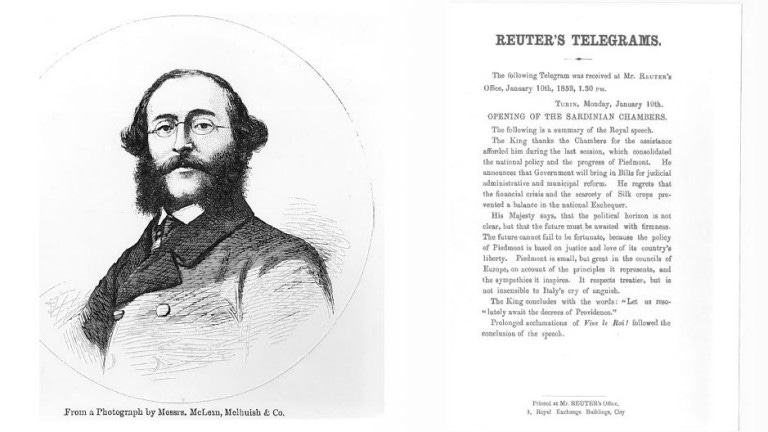
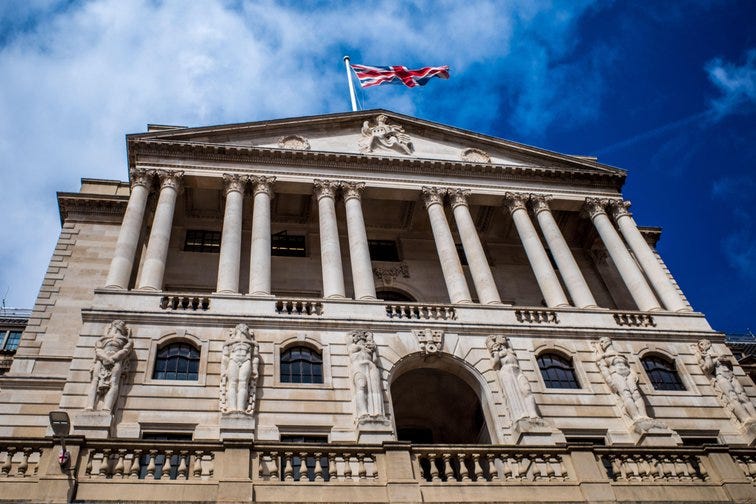

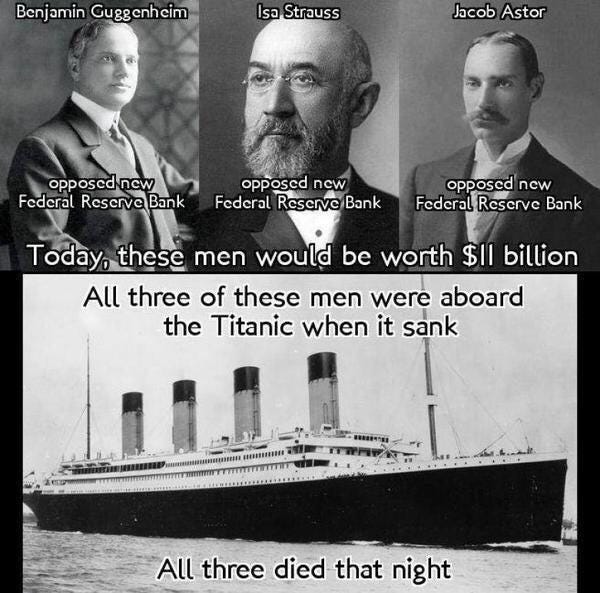
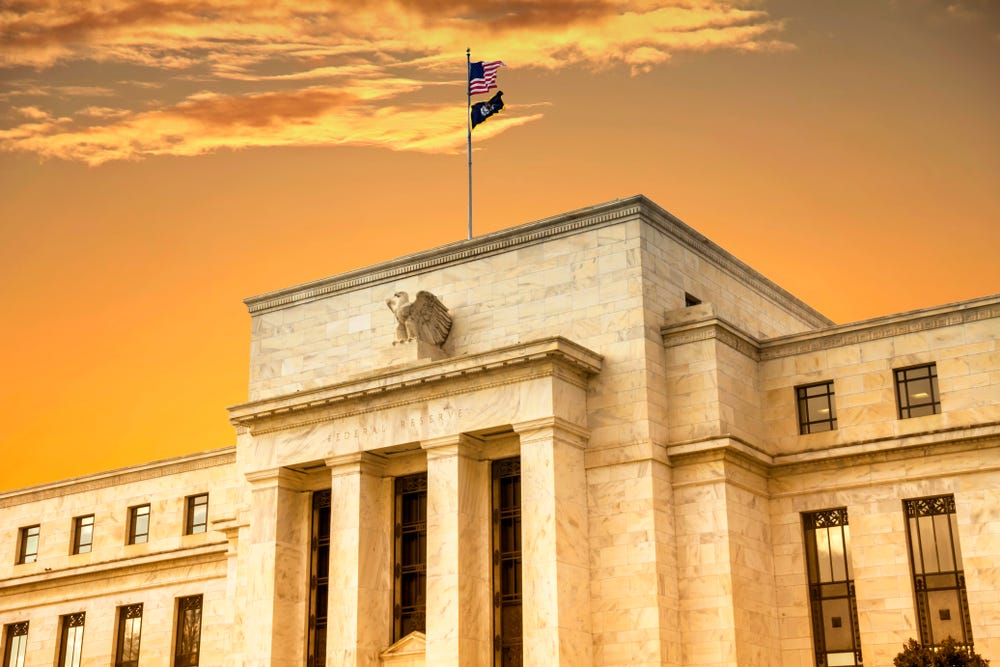


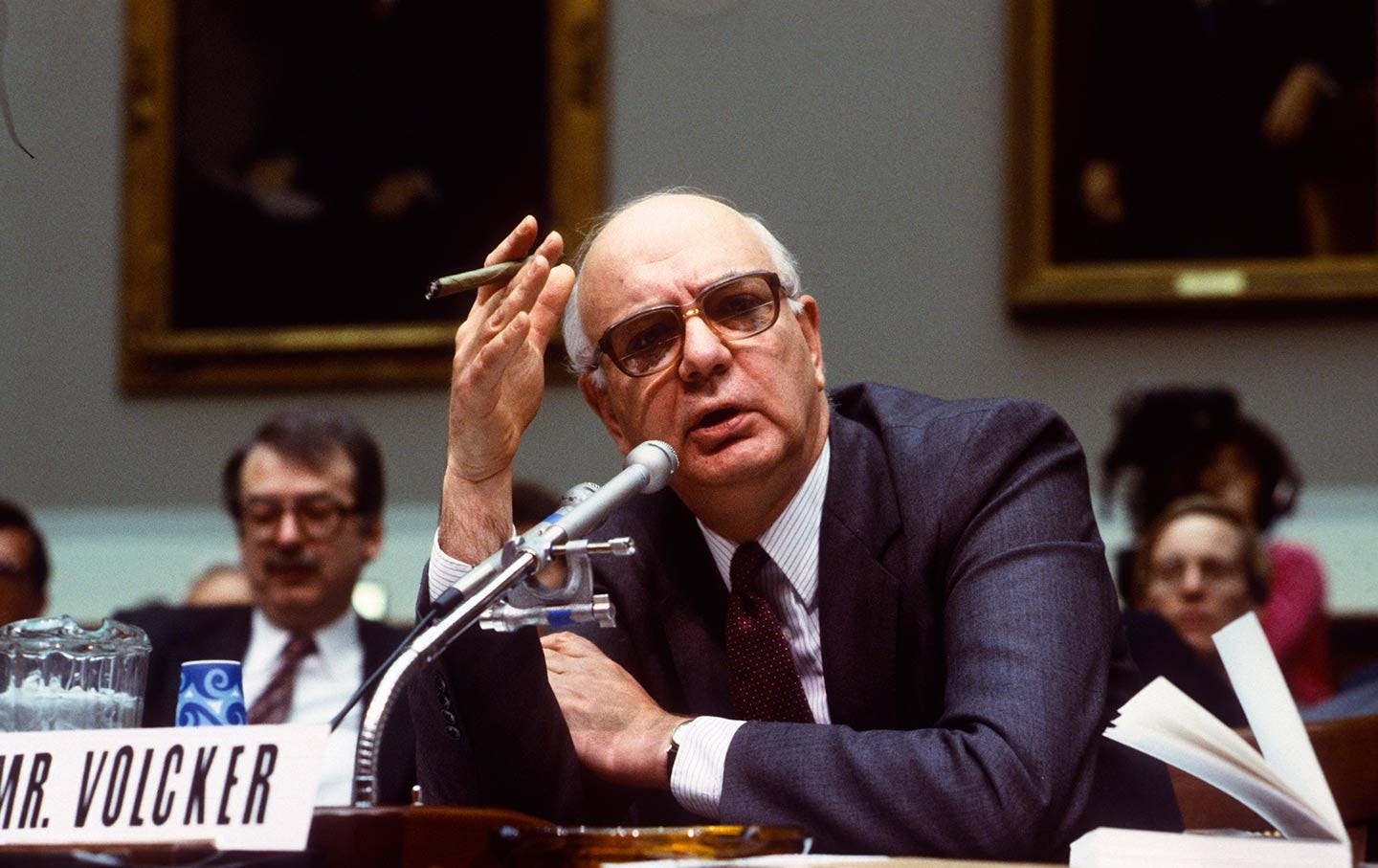
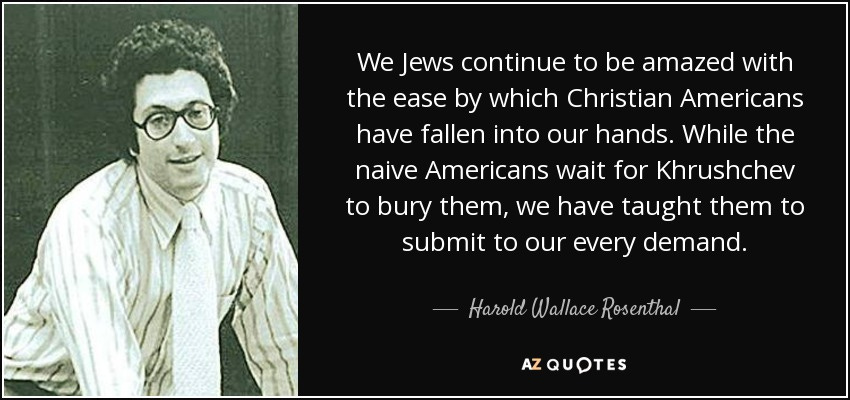
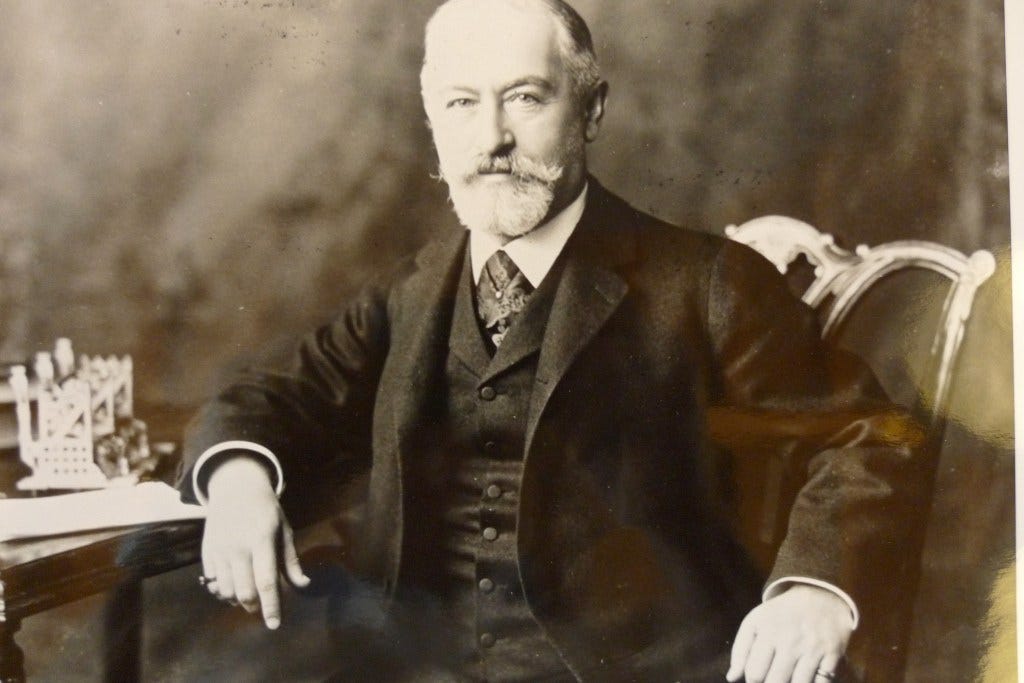




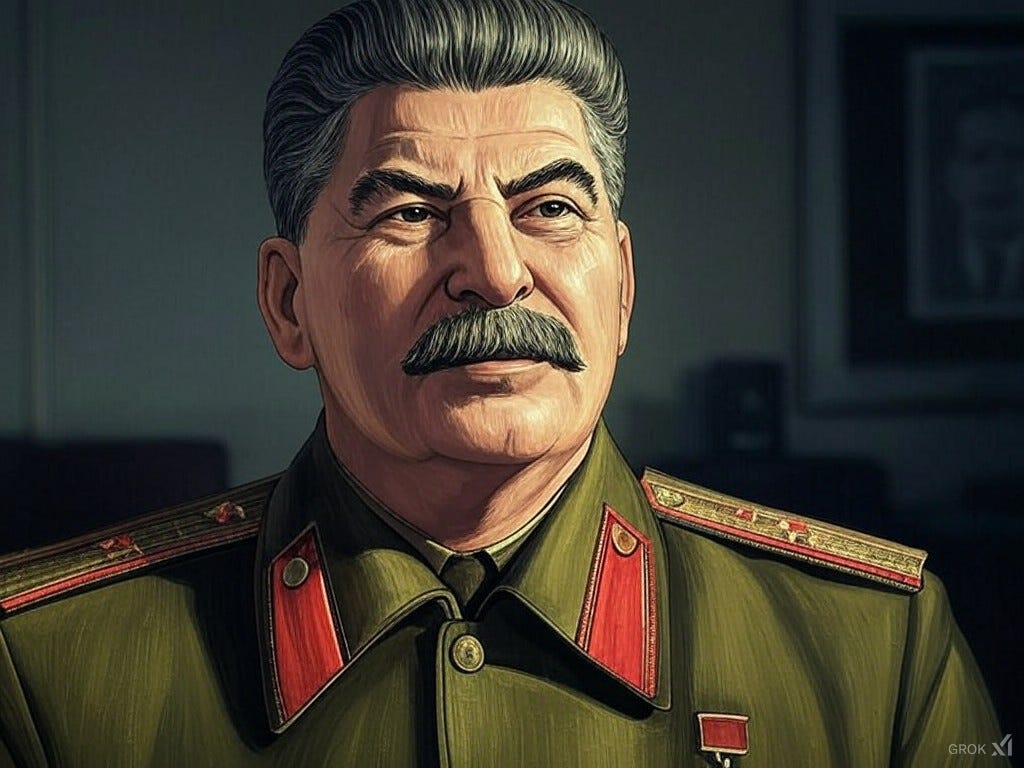

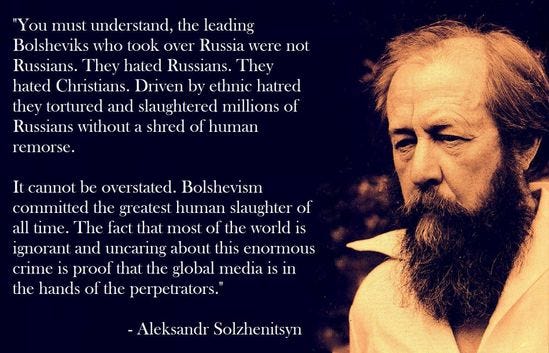
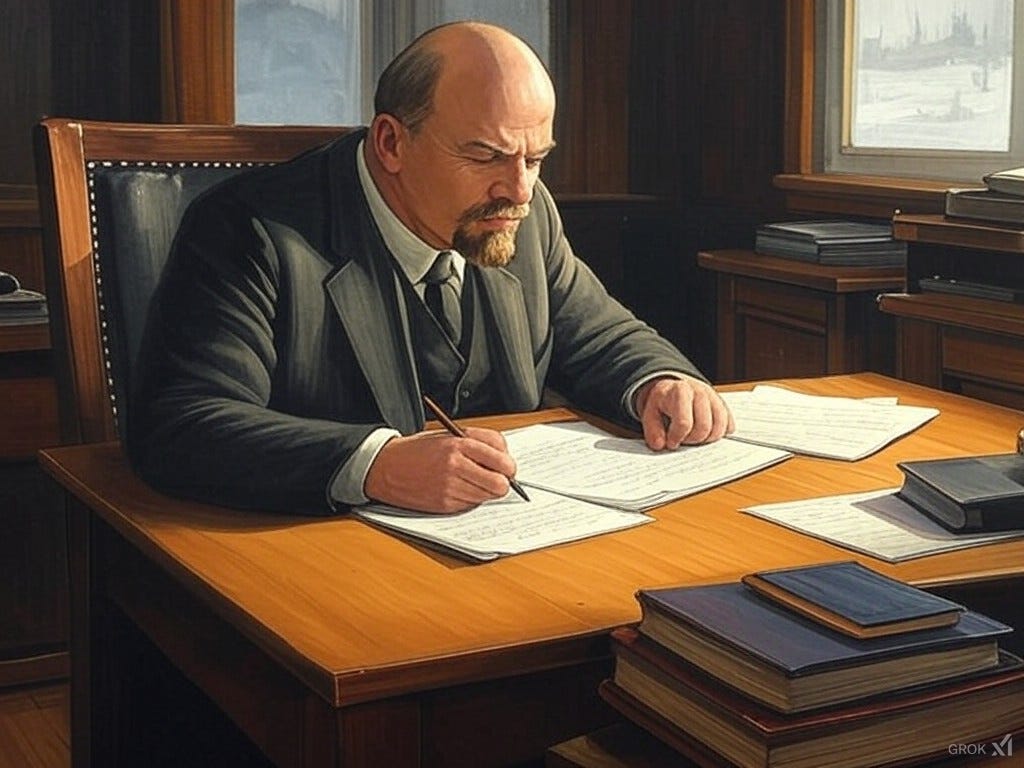

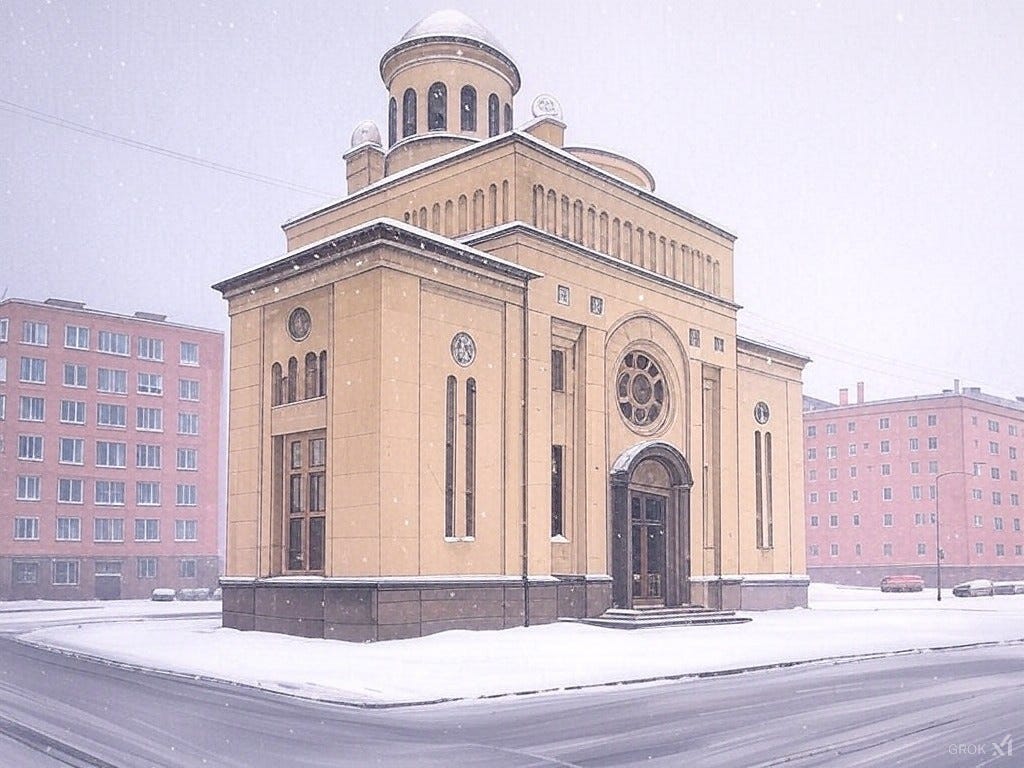
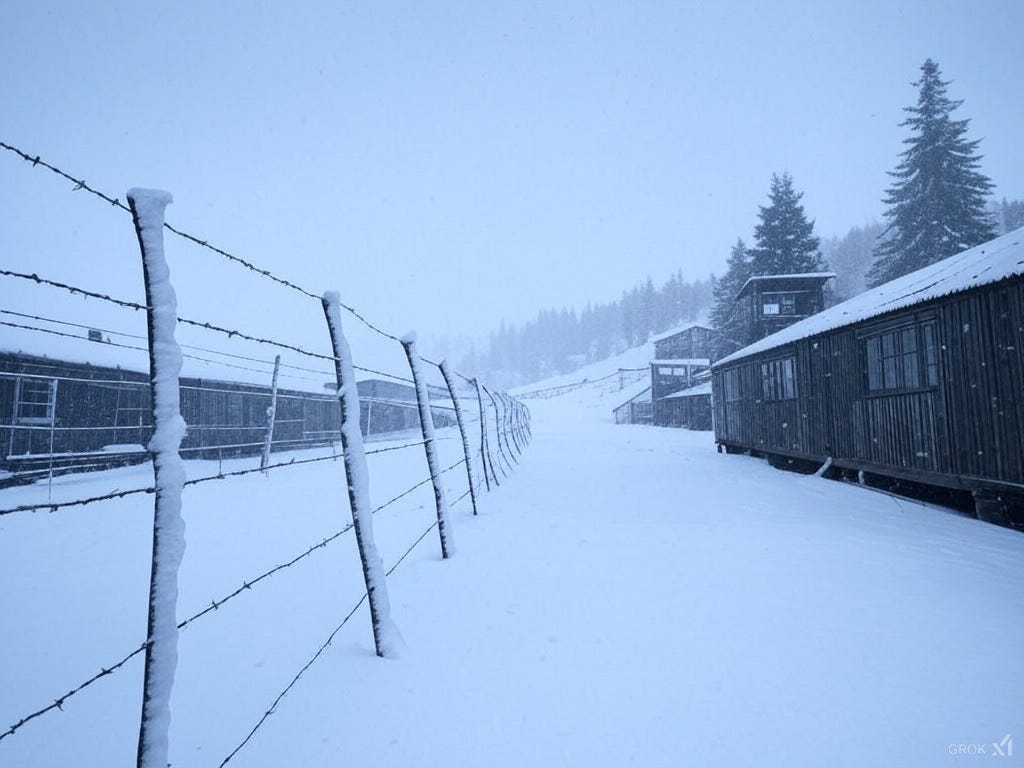
Interesting post, great thanks for reading.
I will note a two of points with which I disagree.
Firstly, there is no English constitution, everything is decided by changeable informal conventions and usages, so the situation that the Bank of England is controlled by the Rothschilds is not surprising. The City has shadow legal power and this is acknowledged in prestigious academic works - Luke Bretherton, Resurrecting Democracy: Faith, Citizenship, and the Politics of a Common Life (Cambridge University Press, 2014).
As for the Bolsheviks, it seems to me that you clearly underestimate role Jews (including Jewish women's) in the early USSR:
«The Jews would indeed play an important role in the Bolshevik Revolution of
1917. At the first All-Russian Congress of Soviets nearly one-third of
Bolshevik delegates were Jews; at the Bolshevik Central Committee meeting
that voted on 23 October 1917 to carry out an armed rising, Jews made up
five out of the twelve members present. Three out of the seven Politbureau
members (Trotsky, Zinoviev, Sokolnikov) who led the uprising were Jewish.
So, too, were the first two heads of the Soviet State, Lev Kamenev and
Yaacov Sverdlov. Kamenev also ran the Moscow Party, while Zinoviev was
the first President of the Communist International and Bolshevik Party chief
in Petrograd. According to Yuri Slezkine, over 50% of leading Party officials
in Petrograd in 1918 were Jews, as well as 45% of city and provincial
Bolshevik officials. In Moscow, in 1923, the figures were not much different.
Jews made up 29 percent of the Bolshevik “leading cadres.” At that time
Jews also represented 15 percent of all leading secret police officials and half
of the top echelon of the Cheka Secretariat.[39] If that were not enough, many
of the leading non-Jewish Bolsheviks (including Bukharin, Dzierzynnski,
Lunacharsky, Kirov, Rykov, Voroshilov, and Molotov) were married to
Jewish women.» – Robert S. Wistrich, From Ambivalence to Betrayal
The Left, the Jews, and Israel. University of Nebraska Press, 2012
What that documentary and many other works dont know is that the creation of the Fed in 1913 didnt actually fully centralize American banking and finance (that didnt come until roughly fifty years after its creation in 1913). First off, the Fed was originally created in a decentralized form, it wasnt until 1935 that it was centralized. And then there was pushback after that where for several years it was effectively nullified and its functions placed back into the Treasury. But the real destruction of the Classical American system didnt come until the advent of the so called Neoliberal Era during the latter 1960s to mid 1980s when the geographic, societal, and sectoral capital diffusers -- the strongest pieces of which were outside of the central bank policy and were their own constructs -- were destroyed, and those diffusers were the most key decentralizing mechanisms in banking/finance